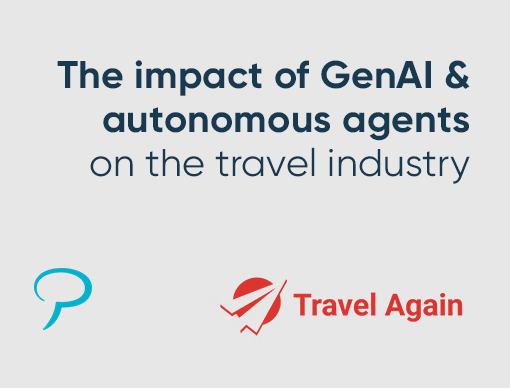Research Insights
LATAM Airlines: It Will Happen!
LATAM Airlines: It Will Happen!
- Published:
- November 2011
- Analyst:
- Douglas Quinby

It will be finished by April 2012, and the regional aviation board will change radically. Yes, the merger of the two aviation giants, LAN (Chile) and TAM (Brazil) announced in August 2010 is finally moving forward. Both companies announced an agreement to exchange shares and create the largest airline in Latin America, headquartered in Santiago, Chile.
As reported in Phocuswright´s Latin America Online Travel Overview, 70% of flights in Latin America are concentrated within five airline groups: Avianca-Taca, LAN-TAM, Copa Airlines and AeroMexico and GOL. The Latin American air scene is promising, as reflected in the expansion of aviation groups and the large volume of passengers. According to the International Air Transport Association (IATA), Latin America has been the only region with profits in the airline industry in recent years, although it is expected that earnings growth will slow in 2011.
The Merger's Approved, But….
Surprisingly, approval instances for the merger, especially in Chile, became increasingly intricate. At some point, there were even rumors that LAN was looking for other merger partners. On September 21, 2011 , the Court of Defense of Free Competition (TDLC), in a split decision, finally approved the merger between LAN Airlines S.A. and TAM Linhas Aéreas , subject to mitigation measures. The airlines had to agree to surrender four daily Guarulhos slot pairs to other airlines willing to fly Santiago-Sao Paulo, to give up membership in either Star or Oneworld, and to interline deals with other airlines that operate selected routes, among other provisions.
The road continues to be rough, however: LAN (and TAM) expressed unhappiness with the antitrust court's ruling, citing “numerical errors†that produced allegedly erroneous and misleading yield figures. Both airlines will appeal certain concessions: 1) the required antitrust review of codeshare deals reached with airlines outside whatever alliance LATAM ultimately chooses, 2) the need to surrender four fifth-freedom traffic rights to Lima in Peru, and 3) the introduction of government surveillance powers, including access to sensitive databases, accounting systems, call centers and other areas.
Alliances
The alliance scenario in Latin America is overwhelmingly dominated by Star Alliance (Copa Airlines, Avianca-Taca, TAM); Oneworld's only hold in the region is LAN (after the collapse of Mexicana last year). SkyTeam has Aeromexico, and starting next year will incorporate Aerolineas Argentinas, which according to Air Transport World is the second-largest most unprofitable airline , surpassed only by Air India. Thus, retaining LAN is critical for Oneworld.
LATAM represents the first time two major airlines from competing alliances have merged. Gol , which recently took over its rival Webjet in Brazil, has so far insisted it will remain unaffiliated, and that if it changes its plans it would most likely end up in SkyTeam.
The industry may not see another alliance battle of this scale for quite some time. For Star, losing TAM would be a bitter pill, but the more likely outcome is a Oneworld victory. Or could somebody envision the unthinkable: Avianca-Taca, Copa, TAM and LAN all within Star?
LATAM Reservation Systems
TAM quickly adopted the Star Alliance's recommended integrated IT platform, the Amadeus Altea customer management solution a system already used by more than 60% of Star's member airlines. Although this deal was announced in August 2009, Amadeus and TAM had already been working on the carrier's migration to Altea for several months, and a cut-over to the new system occurred in March 2010. Altea manages all TAM's reservations, inventory and departure control processes. TAM would eventually also adopt Amadeus' suite of e-commerce services to support its websites and grow online sales. Participation in Amadeus' global distribution system (GDS) was not part of the arrangement.
In 2010, LAN signed a multi-year agreement to transition to Sabre as its reservations system provider, a role previously performed by Amadeus and Resiber. Implementation of the SabreSonic system is in progress.
From the information above, we can conclude that recent investments from both carriers in their respective reservation systems have been strong. The door on a split system option would be open and could be pursued, as the two airline groups stated that they will remain separate units under the new LATAM structure. This kind of arrangement has a precedent in the United-Continental merger, both airlines have kept their own reservation system until now.
Is the topic settled or still not a negotiation priority? Right now, a combination of both.
We requested the opinion of Phocuswright ´s distribution expert , Senior Technology Analyst Bob Offutt on this matter “ With the Interline and Codeshare tools available to them, two airlines hosted on different systems can come very close to appearing to operate like one airline. The challenge is if there is a difference in the features and functionality between the two reservations systems that affects customer service, customers on one airline could be disadvantagedâ€











